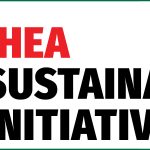Water vapor (e.g., excessive retained humidity) is the most commonplace enemy of vacuum furnaces. In fact, it is the No. 1 threat to everyday heat treatment processes. If water vapor does permeate the hot zone, possible outcomes include reduced hot zone life, discolored work, poor brazing, longer cycle times, and excessive outgassing.
A furnace atmosphere full of water vapor can also cause excessive outgassing. This, in turn, can extend the cycle time due to waiting for the vacuum to recover. As a result, you have maintenance personnel checking the furnace for no specific reason, which takes it out of production and wastes more time.
One should remember, though, that the hot zone is not the only thing affected by water vapor. Water vapor retention can also affect the pipes, pumping system, heat exchanger, and vacuum sensors. In addition, if you place parts/fixtures that have been sitting out in a humid or damp shop in a furnace, water vapor can leap off the parts and affect the furnace.
How Water Vapor Affects Different Hot Zone Types
Water vapor affects molybdenum the same way it affects graphite. Yet, graphite hot zones consume themselves faster due to water vapor retention. Regardless of your hot zone type, the negative effects that occur during the process remain the same.
However, you can add, on average, at least two years to your capital investment’s life span if you follow vacuum best practices. This includes performing scheduled cleanup cycles, verifying the door is closed between cycles, and keeping water vapor out and leak rates down.
Correcting Water Vapor Retention
Correcting water vapor retention is one way to increase the longevity of your hot zone. To handle the threat of water vapor, you should follow the best practices listed above. This also means keeping the vacuum furnace door closed between loads (especially if it’s wet or humid outside) and pumping the furnace down between cycles to at least 30 in Hg.
Some may argue that if you pump the furnace down between cycles to remove excessive water vapor, then you have to backfill to get the door open again, which wastes gas. Yet you have to weigh the cost of the gas vs. the effect of water vapor on the furnace and hot zone. If you pump the furnace down and backfill it, the wasted argon or nitrogen gas can cost about $20 every time. In comparison, though, all the negative outcomes that can result from excessive water-vapor retention outweigh the cost of additional gas usage.
If you do leave the door open for an extended amount of time, you have a few options:
The most common (and recommended) practice is to put the parts in the furnace and pump down without starting the heat cycle right away. Instead, adjust the cycle and extend the time it spends pumping prior to heating. This lets you boil off additional water while the furnace is under vacuum.
Close the furnace door without the parts and run a mini drying cycle. This option is often performed during worst-case scenarios, such as prolonged door open times.
In the end, removing water vapor from the furnace takes time, heat, and vacuum. If you are preparing for an extended shutdown, we recommend that you pump down the furnace and backfill it to negative-5 in Hg. Doing so reduces the leak-up rate during long periods of inactivity. As a result, you are able to come back from shutdown to a clean, dry, empty furnace that can resume normal operations.
Discoloration and Water Vapor
If a cycle did start without following the proper steps or taking enough time to remove the water vapor, parts may emerge with discoloration. The color itself depends on the material. Discoloration tends to start at a sky blue and become darker based on how much water vapor and/or air was in the furnace.
Most controls platforms should be able to prevent discoloration from occurring, including Ipsen’s CompuVac® and VacuProf® controls systems. By using the Outgas Hold feature in the software, you can control at what pressure the furnace heat turns on. As a result, the heat will not turn on if the furnace is excessively outgassing. If there is also excessive outgassing during a heating cycle, the controls will place the cycle into hold.
Roughing Pump and Water Vapor
Since water vapor can also affect the pumping system, it is important to keep your roughing pump oil at the right temperature. Doing so turns the water into steam and prevents any water vapor from mixing with the oil in your roughing pump. This is important as your whole process pumping ability declines if the roughing pump becomes water-bound.
As such, we recommend the use of a roughing pump water miser. Based on the actual oil temperature, the water miser regulates the water flow to the mechanical pump. You can also set it to the desired temperature, so any water vapor coming in can’t mix or emulsify with the oil. This prevents the water vapor from having a negative impact on the process.
If you have a water miser installed and note excessive water, one solution is to open the gas ballast. This allows the roughing pump to increase its temperature temporarily, so it can remove any excessive water.
Not everyone has a water miser on the pumping system, though. As a result, they pump water in and out of the roughing pump at all times. Yet doing so is not conducive to good vacuum practices. Instead, one should regulate the temperature of the roughing pump oil to ensure it stays within 140 to 160°F (60 to 71°C).
Monitoring for Relative Humidity
The PdMetrics® predictive maintenance software platform monitors the relative humidity and ambient temperature. The platform then indicates any prolonged exposure of the furnace to water vapor. It does this by considering how long the furnace takes to pump down compared to the ambient temperature and humidity, how long the door is open, and previous leak-up rates.
If there is an issue, the system will set off a vacuum integrity alert that states it’s taking too long to pump down. It will then determine if it is humid outside. If it is, the software will provide a set of steps that you should first follow. If it is not, it will provide a different set of steps for you to take. As such, it prioritizes corrective actions based on sensor readings and running algorithms.
Water vapor can significantly affect the furnace’s performance, as well as the parts being heat-treated. If the ultimate goal is to protect your vacuum furnace and extend your hot zone’s life span, then following good vacuum practices is essential.
Discover additional best practices and tips for vacuum furnace maintenance at www.IpsenHarold.com.


































